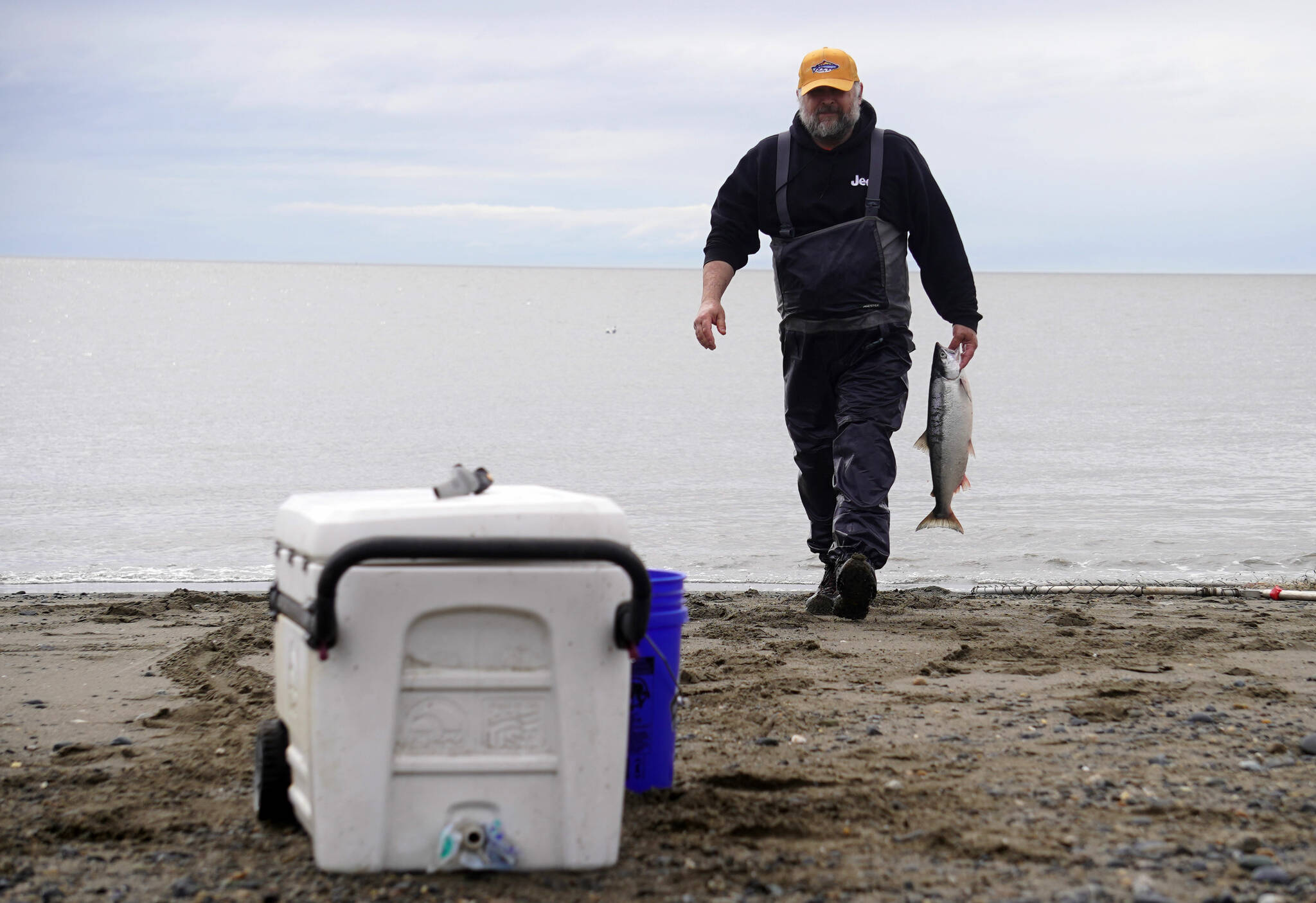The Kenai River’s personal use sockeye salmon dipnet fishery opened Thursday morning. Dipnetting will be allowed from 6 a.m. to 11 p.m. each day until July 31.
Thursday afternoon, dozens of nets could be seen extended from Kenai’s north beach. Jeff Dunham, who was out with his kids, said the fishing had been “pretty good for opening day.”
The weather was nice — no rain or winds, and together Dunham said his party had brought in 19 salmon.
“It’s a really good day,” he said. “Bringing my kids out to get some meat.”
On Wednesday, just before the fishery opened, nearly 44,000 sockeye were counted on the Kenai. So far this year, 164,000 salmon have been counted in the late run. Around 2 million sockeye were counted in 2024 and 2023, both entirely exceeding the escapement goal of 1.1 to 1.4 million fish.
Similar strong runs have been observed at nearby Kasilof and Russian rivers, motivating emergency orders and liberalized restrictions.
According to the department’s website, the peak harvest days for sockeye salmon on the Kenai River are historically observed between July 16 and 25. They also note that the fishery is managed by emergency order, meaning that regulations can change and the fishery can be closed “at any time.” Fishers should acquire updated information before fishing.
As of Thursday evening, no emergency orders had been issued for the Kenai River personal use fishery.
Only Alaska residents can participate in a personal use fishery. Any angler 18 years old or older must possess a valid sport fishing license. A permit, which is effective for an entire household, must also be acquired before fishing. The department says permits can be obtained from private vendors or at department offices — like the Fish and Game office in Soldotna. A list of private vendors can be found on the department website.
Viewed on the department’s online store, a sport fishing license costs $20, while the Upper Cook Inlet Personal Use Salmon Permit is free.
On the permit, the date, location and harvest by species must be filled in each time an angler fishes — even if no fish are caught. All reporting must be submitted via the department’s harvest reporting webpage by Aug. 15, even if the permit was left unused or if no fish were caught for the season. Failure to report by the deadline will result in the loss of personal use fishing privilege in the next year, the department says.
The bag limit for Upper Cook Inlet personal use salmon fisheries — which include not just the Kenai but also the Kasilof River and Fish Creek — is 25 salmon and 10 flounder for the holder and 10 additional salmon for each additional household member. Each caught salmon must be “marked” by clipping both ends of the tail fin using scissors or shears. Marking must be done “before the salmon is concealed from plain view” or the angler may be subject to fines.
Dipnetting on the Kenai River is allowed from the shore at the mouth of the Kenai River, extending north and south into Cook Inlet to commercial fishing markers and upstream to a line from No Name Creek. Anglers can also dipnet from the shore on the south bank between the Kenai Landing Dock to the downstream edge of the Warren Ames Bridge.
Dipnetting from a boat is also allowed between department markers near the Kenai City Dock upstream to the downstream edge of Warren Ames Bridge, with the same requirements for permitting, limits and marking. The department notes that there are no nearby public boat launches — the closest is upstream of the Sterling Highway bridge.
All caught fish must be recorded on the permit and have clipped tail fins before leaving the area or anglers may be subject to a fine.
More information about fishing regulations and availability can be found at adfg.alaska.gov.
Reach reporter Jake Dye at jacob.dye@peninsulaclarion.com.

